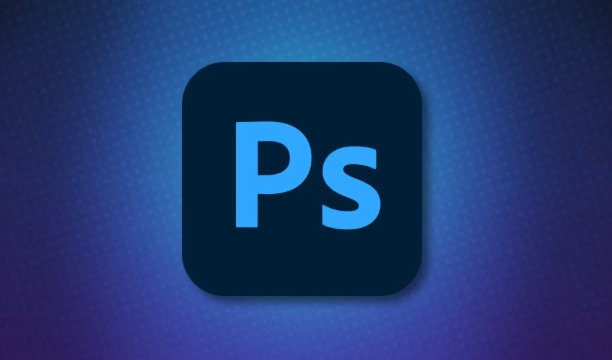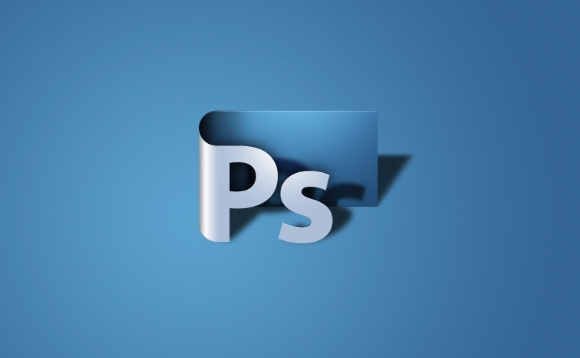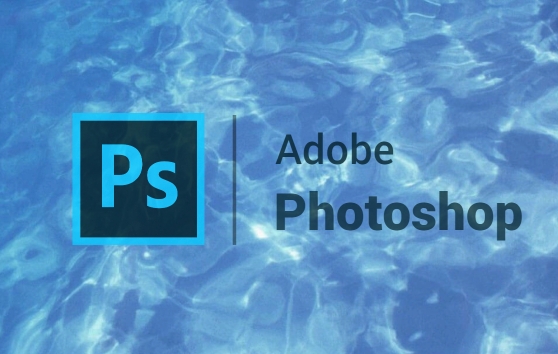How to create a custom keyboard shortcut in Photoshop
The method of setting custom shortcuts in Photoshop is as follows: 1. Open the "Keyboard Shortcuts" setting interface in the "Edit" menu; 2. Find the category to which the target function belongs and locate it in the list; 3. After clicking this function, press the new key combination in the "Shortcuts" input box, and if it is occupied, confirm whether to replace it; 4. Save changes, you can create a new group or export the configuration for backup or migration. Through the above steps, you can complete the custom settings of shortcut keys and improve operation efficiency.

Setting custom keyboard shortcuts in Photoshop is actually not difficult, but many people don’t know where to start at the beginning. You just need to open the "Keyboard Shortcuts" settings panel, find the function you want to change, and then specify a key combination you like.

Find the "Keyboard Shortcuts" setting interface
Photoshop's shortcut key settings are not in the preferences, but in the Edit menu (the "Photoshop" menu on Mac). Click on the keyboard shortcuts and you will see all the modifiable command categories.

In this interface, you can see several major categories of shortcut keys:
- Application-level commands (such as new file creation and saving)
- Panel menu commands (such as functions in the layer panel)
- Tool shortcut keys (such as selecting the V key of the move tool)
If you want to change the shortcut key for a specific function, first find the category it belongs to, and then scroll to search in the list.

Steps to customize shortcut keys
After entering the "Keyboard Shortcuts" interface, the operation process is roughly as follows:
- Click the command you want to modify, the current shortcut key will be displayed below
- Put the cursor into the "Shortcut Keys" input box and press the new key combination you want (such as Ctrl Shift E)
- If this shortcut key has been occupied, the system will prompt you whether to replace it
- Click "Accept" to save the changes, or "Restore the default shortcut key" to undo the changes
Note: Do not set key combinations that conflict with the system or other software too seriously, such as Ctrl Shift Q, which may be occupied by the browser, may be triggered by mistake.
Save and export custom shortcut key sets
Don't forget to save your shortcut key configuration after setting it up. Photoshop supports creating multiple sets of shortcut keys to facilitate you to switch between different workflows.
- There is a "Group" drop-down menu at the bottom of the "Keyboard Shortcuts" window
- Click "New Group" and give a name (such as "My Workflow")
- All modifications will be automatically saved in this group
You can also click "Export Group as File" to back up the configuration, so that you can directly import and continue to use when changing the computer or reinstalling the software.
Basically that's it. Although there are not many steps in operation, the key is to remember where to change and how to confirm whether there is any conflict. Sometimes if a small shortcut key is correct, the efficiency improvement is obvious.
The above is the detailed content of How to create a custom keyboard shortcut in Photoshop. For more information, please follow other related articles on the PHP Chinese website!

Hot AI Tools

Undress AI Tool
Undress images for free

Undresser.AI Undress
AI-powered app for creating realistic nude photos

AI Clothes Remover
Online AI tool for removing clothes from photos.

Clothoff.io
AI clothes remover

Video Face Swap
Swap faces in any video effortlessly with our completely free AI face swap tool!

Hot Article

Hot Tools

Notepad++7.3.1
Easy-to-use and free code editor

SublimeText3 Chinese version
Chinese version, very easy to use

Zend Studio 13.0.1
Powerful PHP integrated development environment

Dreamweaver CS6
Visual web development tools

SublimeText3 Mac version
God-level code editing software (SublimeText3)
 What are the key differences between Layer Masks and Vector Masks, and when should each be used?
Jul 16, 2025 am 12:03 AM
What are the key differences between Layer Masks and Vector Masks, and when should each be used?
Jul 16, 2025 am 12:03 AM
LayerMasks and VectorMasks are used in Photoshop with similar uses but different principles. LayerMasks is based on pixels and uses grayscale values to control the display and hiding of layer areas. It is suitable for photo detail editing, soft transition effects and fine brush adjustments, but zooming in may lead to jagging; VectorMasks is based on vector paths and shapes, and has resolution irrelevant resolution. It is suitable for graphics that require clear edges such as logos, icons or text frames, and can be scaled losslessly; the selection is based on the content type (photo or graphics), whether the size needs to be greatly adjusted, and the required edge effects (soft or sharp), and sometimes combined use can give full play to their respective advantages.
 What is the purpose of guides, grids, and rulers in achieving precise layouts?
Jul 15, 2025 am 12:38 AM
What is the purpose of guides, grids, and rulers in achieving precise layouts?
Jul 15, 2025 am 12:38 AM
Rulers provide positioning references, Guides implement element alignment, and Grids builds a systematic layout. 1. Rulers display position coordinates, and can drag out reference lines to check element deviations and judge distance specifications; 2. Guides are virtual lines dragged out from rulers, accurately align elements and divide areas, and support locking and color settings; 3. Grids consists of rows and columns to control the overall layout rhythm, and adapt to responsive design, which are common, such as 12-column web page grids and 8px mobile grids. The combination of the three improves layout efficiency and professionalism.
 How does Photoshop's 'Generative Fill' (new AI feature) change the approach to image editing and creation?
Jul 24, 2025 am 01:41 AM
How does Photoshop's 'Generative Fill' (new AI feature) change the approach to image editing and creation?
Jul 24, 2025 am 01:41 AM
Photoshop's "general fill" function has revolutionized image editing and creation through Adobe Firefly and AI technologies, which not only improves speed but also enhances creative flexibility. 1. The background replacement is transformed from a time-consuming manual cloning to an input prompt to generate a natural background matching light, perspective and style; 2. In concept design, users can quickly generate elements such as shelves or plants to build a scene and significantly shorten the early conception time; 3. In terms of image modification, only accurate prompts can be used to achieve complex operations such as removing objects and continuing textures, but the quality of the result depends on the accuracy of prompts; 4. The focus of skills has shifted from traditional tools to effective prompt word writing to make AI collaboration a new core skill. This feature is not a replacement for the original tool but is effective
 How can HDR (High Dynamic Range) images be created and toned mapped in Photoshop?
Jul 15, 2025 am 01:13 AM
How can HDR (High Dynamic Range) images be created and toned mapped in Photoshop?
Jul 15, 2025 am 01:13 AM
TocreateHDRimagesinPhotoshop,firstcapturebracketedexposures(3–5shotsatdifferentlevels)onatripodinRAWformatwithconsistentISO.Next,use“MergetoHDRPro”underFile>Automate,enablealignmentandghostremovalifneeded,resultingina32-bitimage.Thenapplytonemappi
 How to fix skin tones in Photoshop
Jul 27, 2025 am 02:08 AM
How to fix skin tones in Photoshop
Jul 27, 2025 am 02:08 AM
Adjusting skin tone requires four steps in Photoshop: first, use the "Hue/Saturation" adjustment layer to adjust the body tone, select "Coloring" and slightly adjust the hue and saturation and cooperate with local processing of the mask; second, adjust the light and dark levels through "curves", brighten the midtones, darken the shadows and soften the highlights; then use "Optional Colors" to finely correct the color cast in the red, yellow and magenta channels; finally, combine "repair tools", "imitation stamps" and "Gaussian blur" for local modification and softening effects. The entire process should be gradually and carefully observed to ensure natural reality.
 How to use the magic wand tool in Photoshop
Jul 21, 2025 am 01:30 AM
How to use the magic wand tool in Photoshop
Jul 21, 2025 am 01:30 AM
Use Photoshop's magic wand tool to quickly select areas of similar colors, suitable for background deletion and simple cutouts. The core is to master the setting options and use them in conjunction with other functions. The operation steps are as follows: 1. Press the shortcut key W to select the magic wand tool, click the image area to select the area; 2. Press Shift to add the selection, Alt or Option to subtract the selection; 3. Adjust the "Tolerance" value to control the selection range, the smaller the value, the more accurate it is; 4. Check "Continuous" to select only the connected areas, cancel the entire image to select the entire image; 5. Enable "Sample all layers" to select the color based on the overall effect of multiple layers. Magic wands are suitable for scenes with single colors and obvious contrast, and are not suitable for situations where colors are similar, edges are blurred or require high precision. Practical techniques include scaling canvas, combining "select"
 What is a non-destructive workflow in Photoshop
Jul 19, 2025 am 01:40 AM
What is a non-destructive workflow in Photoshop
Jul 19, 2025 am 01:40 AM
The core of a non-destructive workflow is the use of adjustment layers, smart objects, and masks. 1. Use the adjustment layer to perform color correction and tone adjustment to avoid directly modifying the original image pixels; 2. Convert the layer into a smart object to apply editable smart filters and maintain scaling quality; 3. Use a layer mask instead of the eraser tool to hide or display the area to achieve lossless editing. Together, these three technologies ensure that image editing is flexible and reversible while preserving the integrity of the original data.
 What is the purpose of the History panel and History Brush tool?
Jul 18, 2025 am 12:40 AM
What is the purpose of the History panel and History Brush tool?
Jul 18, 2025 am 12:40 AM
Photoshop's History panel and HistoryBrush tools improve image editing control by recording editing steps and allowing selective restoration. The History panel saves up to 20 operation states in the form of a timeline (customizable), supports jumping to any historical node to restore the entire file, but the record will be cleared after closing the file; HistoryBrush can restore the specified historical state in a specific area, and combines the brush settings to achieve local corrections, such as retaining the facial colors of the character in the desaturation effect. Pay attention to when using it: apply as early as possible, create snapshot backups critical stages, increase flexibility with layer masks, and pay attention to memory usage issues. Although they are suitable for quick adjustments and experimental editing, they cannot be replaced







